In a shocking twist, Storm is one of the decks I am considering for Grand Prix DC.
Because everyone already assumes this, I’m 100% OK talking about it instead of giving away info about the other three decks I’m considering.
Here is your annual/semi-annual refresher course on how to win with Dark Rituals.
The four most relevant lists for reference, somewhat sorted from fast and loose to slow and precise, are:
Lands (12)
Spells (48)

Lands (14)
Spells (46)

Lands (15)
Spells (45)
- 1 Tendrils of Agony
- 4 Brainstorm
- 4 Cabal Ritual
- 4 Duress
- 4 Dark Ritual
- 2 Cabal Therapy
- 4 Lotus Petal
- 4 Lion's Eye Diamond
- 4 Infernal Tutor
- 4 Ponder
- 1 Ad Nauseam
- 4 Preordain
- 4 Gitaxian Probe
- 1 Past in Flames
Sideboard

Lands (15)
Spells (45)

Why Play Storm?
There’s a lot of hype about Storm being a difficult deck to play.
It’s a lie.
Storm makes Magic easy.
The hardest part of Magic is making low information, conditional decisions. If their open mana represents Savage Surge, I need to double block, but if it’s Voyages End I can’t do that. If they have Stifle and Daze I need to do X, but if they have Spell Pierce I need to do Y. In a format like Legacy, most of the interactive tricks are extremely cheap, making it harder to discern what cards your opponent has just based on game play. In the stock Storm lists, just under 20% of your deck reveals your opponent’s hand. Guessing is a non-issue.
There are also relatively few cards that matter for a Storm deck and only a few windows where your opponent can cast them. While this seems like it should make life easier for your opponents, combo in Legacy is on a different level from combo in other formats. You have an absurdly good long game thanks to the powerful cantrips, and most of the super-cheap interaction can be negated by sculpting the right hand. Even when you don’t have perfect info on their hand, you can sometimes just jam right through it.
Storm even makes playing two of the most difficult cards in the format easy. Brainstorm is very straight forward in this deck, and Cabal Therapy just names the obvious cards.
In exchange, all you have to do is count.
Sure, sometimes it’s two things at once. That’s why we have a pen and paper.
Cantrips:
A decent amount of this doubles up on [author name="Carsten Kotter"]Carsten Kotter’s[/author] excellent article on cantrips in combo. Some of it doesn’t and some things he mentions I don’t. Just read both.
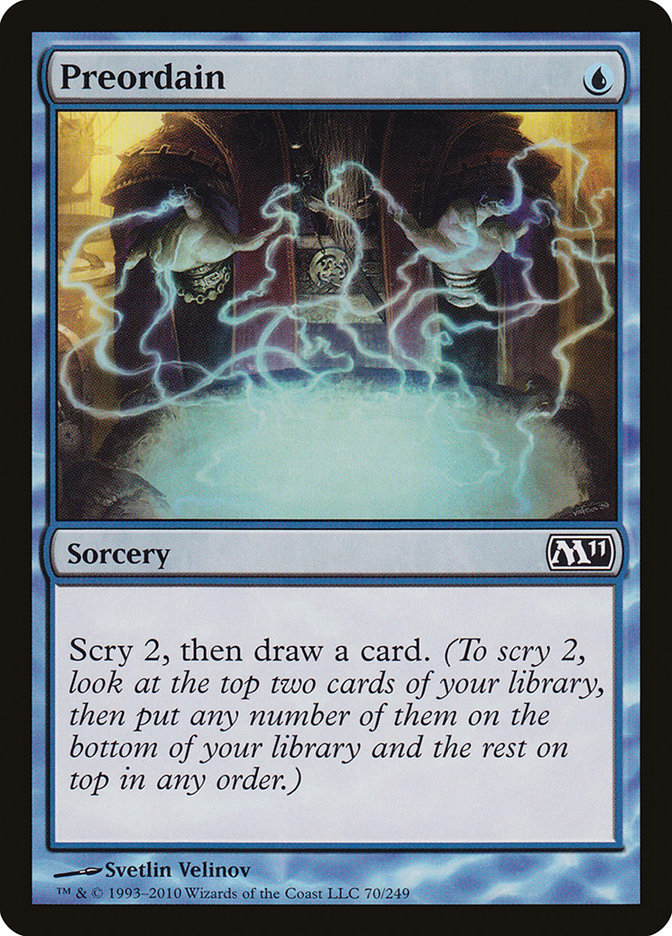
There really isn’t a lot of nuance to casting Preordain. You look at some cards, send the ones you don’t want away and keep the ones you like.
Fine, there’s a little bit. If you know you are going to fetch the turn you Preordain and other cantrip interactions aren’t involved, you usually want to fetch before you scry two to the bottom instead of shuffling in the bad cards. For example, if you are casting two Preordains on turn two, you should fetch first then cast them.
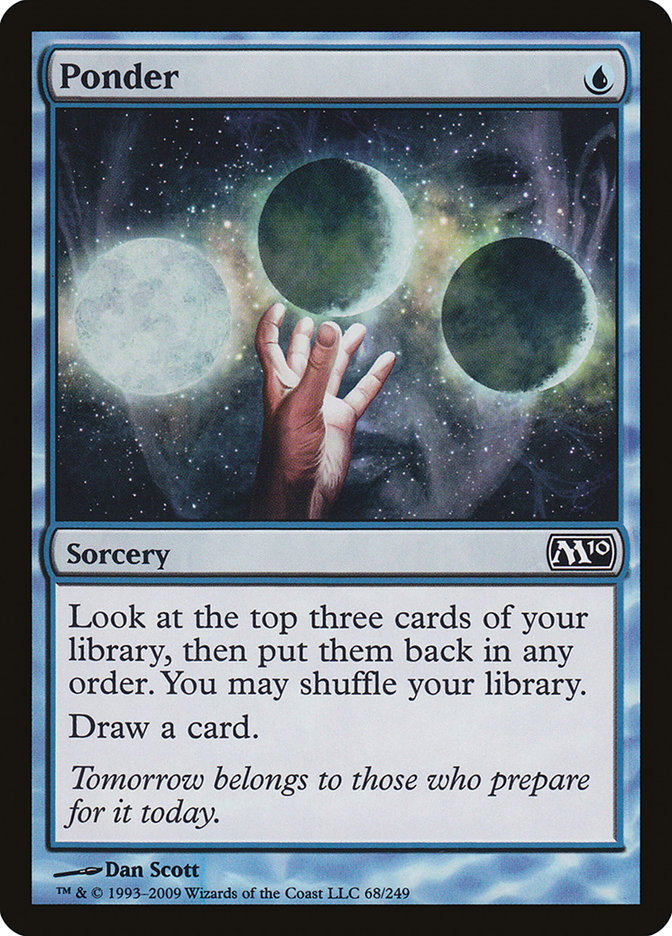
If there is one good card and two blanks in your Ponder, ship it unless A) the one card kills them or B) you are going to fetch away the blanks.
If you are digging for a single card, Ponder is the best cantrip to cast as it looks at three cards first plus a random fourth if you need to ship them. This can come up in scenarios where you are tight on mana the turn you are about to win, after an Ad Nauseum that somewhat bricked, or when you can just find a single card to kill them on the spot.
Often people get excited to see the card they want off Ponder and immediately draw it before passing the turn. Then they get Duressed and feel like an idiot. Don’t let this be you. If you are passing the turn against opponents that can view and interact with your hand, floating a card on top with Ponder is usually correct. The exception is if you are equally afraid of a Jace fateseal, but that scenario is comparatively rare.
Similar to Preordain, it is usually incorrect to have to shuffle immediately after a Ponder. It’s not strictly incorrect as sometimes you do want exactly one of the cards, but Ponder plus fetchland is a lot stronger when you are presented with the option of fetching after instead of the requirement to do so.
A good example of not being required to fetch is with multiple Ponders. If you kept the first because it had multiple good cards, it’s not like immediately firing off the second is seeing many more cards (one to be exact). If you wanted more than one card out of the first Ponder, you can easily just pass, use your draw step, and then use the second Ponder on two out of three new cards.
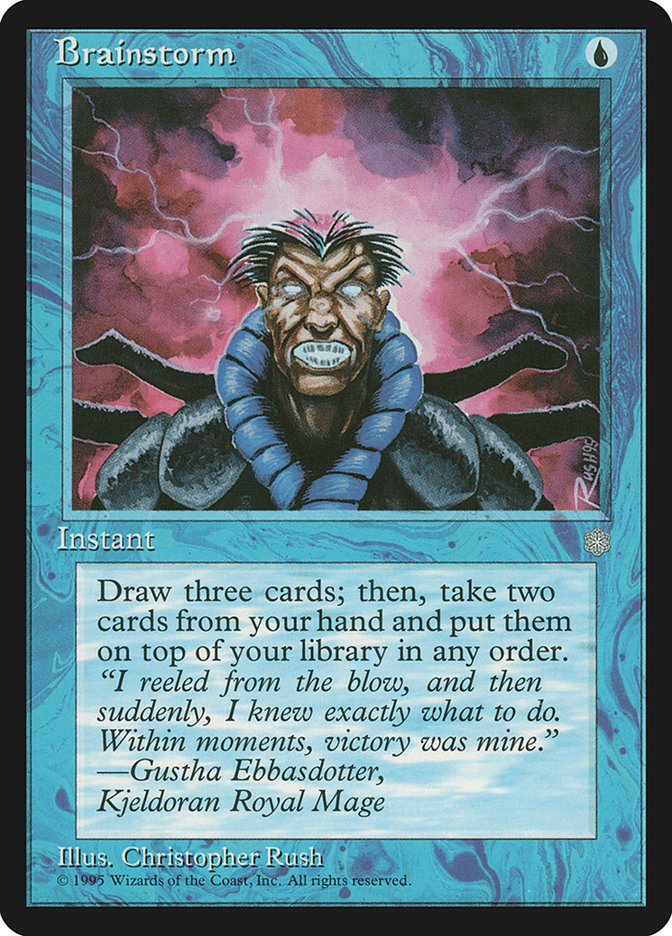
Brainstorm before you fetch.
Wait, you want more?
Brainstorm in this deck is fairly different from Brainstorm in most other decks. There really isn’t a point of the game where you are thinking “Oh, my cards are all good, I should save this for value”. If all your cards are good, they’re dead. There aren’t more turns for you to draw blanks that you want to ship.
One great example of Storm making things easy.
I guess there is one exception to it being simple. When you are low on cards due to a Hymn to Tourach or similar effect, you want to save Brainstorm to ship back a blank draw step. Having five or six cards that are all good is an easy win, but only having two or three is not going to cut it most of the time.
I typically have no fear of Brainstorming without a shuffle effect. In the Cabal Ritual list, you are at something like a coin flip to find a fetch, and if you don’t, a Ponder or just the win is good enough. In the Rite of Flame lists, you often are in a situation where a single something kills them on the spot and a Brainstorm is favored to find it.
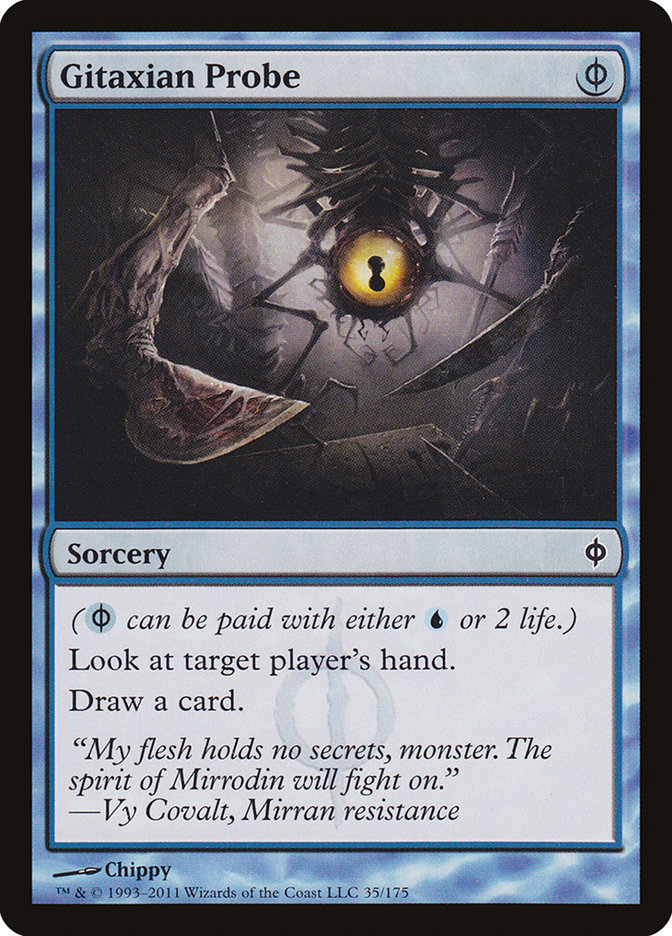
This is the newcomer to the cantrip suite, and it’s very different from the others. Instead of improving card quality, Probe provides information and ups the Storm count without mana.
I don’t wait on my Gitaxian Probes. I want the information now. I want to know if I have to Duress this turn or whether I should cantrip. I want to know what I should look for with my cantrips based on your hand and the extra card.
Other Sequencing:
You have Brainstorm, Gitaxian Probe, Ponder, and Preordain in hand. What order do you play your cantrips in?
Well, Gitaxian Probe is clearly first. Not only does it give you more information about whether you need to find a discard spell or go off immediately, replacing itself with a random card gives you more info about what you are digging for in the first place.
If you are digging for a specific card. Preordain comes first. It never leaves dead cards on top of your deck, and even if you keep 100% of the cards it only leaves one known card on top of the deck compared to two with Brainstorm or Ponder.
If your hand is still up in the air, usually a Brainstorm is the first spell to fire off. Ponder and Preordain are more targeted cantrips and better at just searching for a single missing piece.
If you are going to have to fetch to sequence all your spells, Brainstorm before your last chance to shuffle. The common early game sequence with the old 2010 list was turn one Preordain, turn two Brainstorm, fetch another Island, and Ponder or Preordain again.
Protection:
If your opponent is playing Daze and you are concerned about hitting a Force of Will with your disruption, don’t let them Daze it. Similar things may apply to Spell Pierce.
If there is a Force of Will in their hand and you do not take it, one of the following must be true.
- They have a hate card you don’t have another answer for (ie. Chalice of the Void, Counterbalance)
- You are killing them on the spot and taking their other blue card, which happens to be also relevant.
- You have another discard spell to fire off the next turn and they have something that could potentially cause bigger issues, like a Brainstorm that does a bunch of stuff or a discard spell they are about to cast.
On that second note about taking their other blue card, don’t forget that Force of Will does have an actual casting cost. They don’t need a blue card if they have 3UU open.
In general, Brainstorm is a much scarier card than it appears to be. Often it is more likely to beat you than a Daze, and depending on your expected line to victory even something like Spell Pierce or Stifle is less relevant.
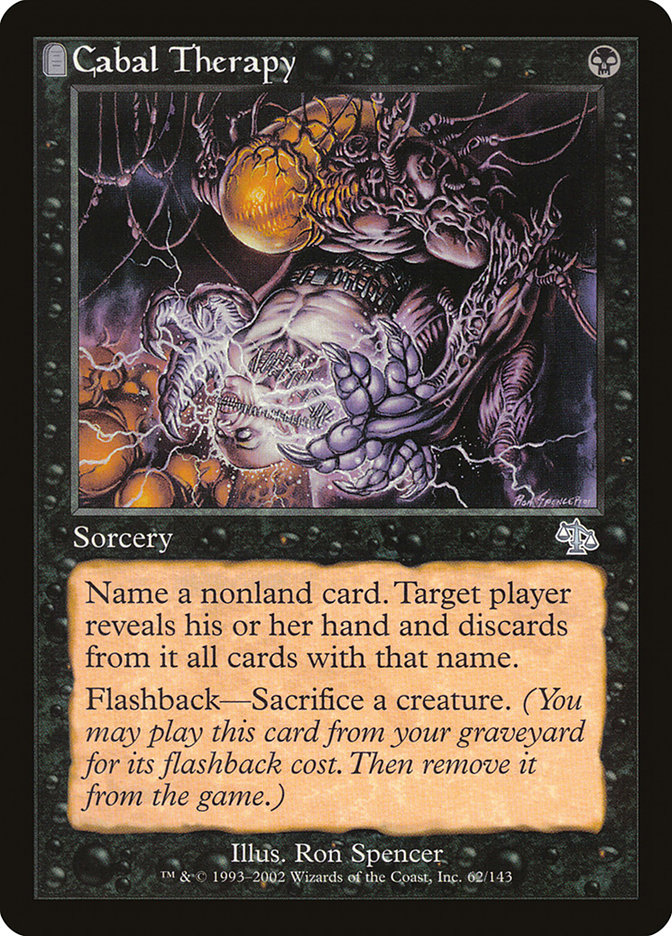
If your opponent Brainstorms in response to a Therapy, there’s a bit of a guessing game to be had.
Just remember they can only draw one of the cards the next turn. That means if they are trying to hide a counterspell and still cast a disruption or action spell the next turn (like Hymn to Tourach) they have to keep one of the two in their hand.
Remember that hitting a blue card can help cut access to Force of Will later.
Remember that if it looks like you can still represent a kill after the Therapy resolves, they might have to keep their obvious answer (aka Force of Will) in hand anyways.

People have absolutely no idea what to do against this card. It’s really absurd. They Force it when they have nothing else to do, assuming you won’t keep going for it. They don’t Spell Pierce it when you can’t pay and still kill them. Get your act together.
In the lists that play Silence, you are usually looking to have two colors of mana when comboing. Keep this in mind if your Silence gets Dazed and decide whether you can afford to pay and still win. Also consider if paying might just make them blow more counters on the Silence.
There are situations where you want to fire off a very early Silence as a pseudo Time Walk. This usually involves your opponent not playing blue or you having a backup protection spell with a mediocre hand.
Rituals:
Add. Don’t subtract.
I see a ton of people do a bunch of unnecessary math with this deck and make mistakes.
Dark Ritual is +2. Rite of Flame is +1 or possibly more. Cabal Ritual is +1 or +3. Lion’s Eye Diamond is +3. Lotus Petal is +1.
If you process Dark Ritual as (-1, +3) or Cabal Ritual as (-2, +3 or +5), you are performing an extra operation. More operations is more chances for error, more chances to lose track of other important numbers like Storm count, more chances to forget whether or not you were playing around Daze.
The only time you should care about subtracting mana for the cost of a Ritual is if you are accounting for a line where your opponent counters it. In that case, your Rituals are just –X.
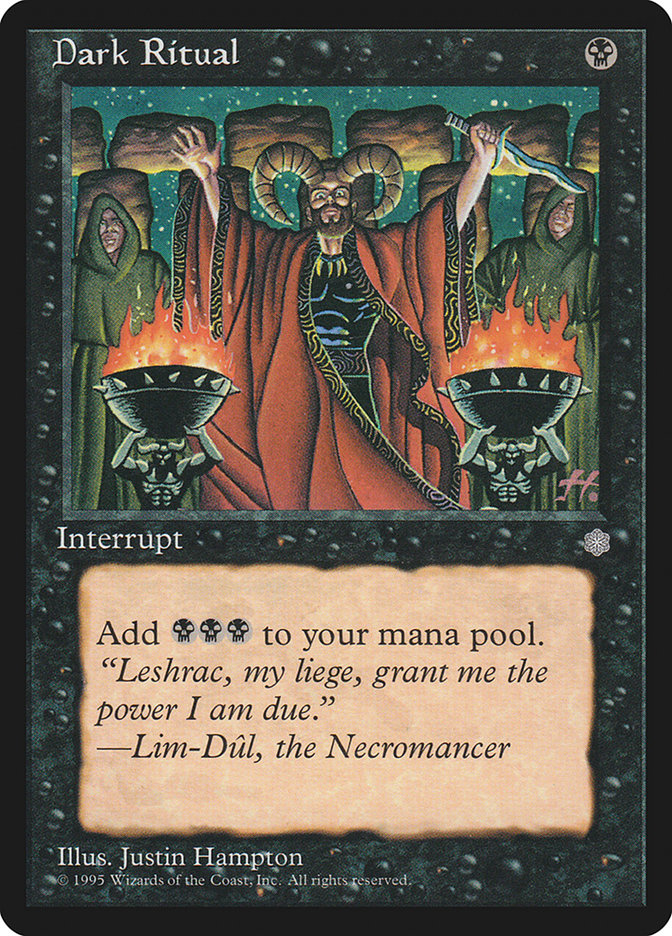
This card is an instant. This typically comes up in the battle of Rite of Flame plus one extra mana versus Daze. You have two open mana and need red and black to combo off. You lead with Rite of Flame, they Daze, you respond with Dark Ritual and pay. Similar things can occur with Silence if you are trying to turn off Stifles or Spell Snares.
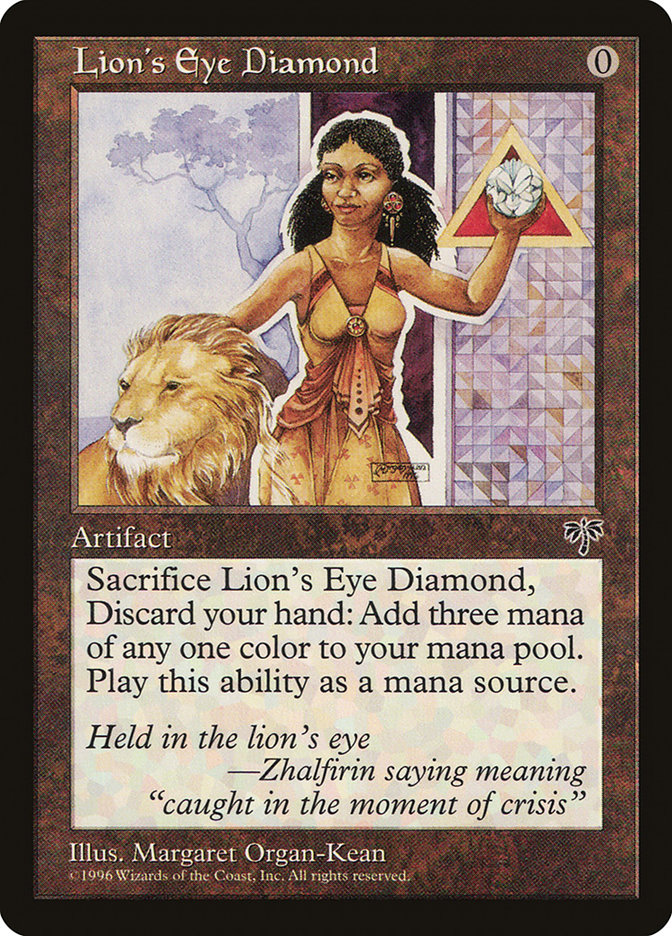
With Brainstorm and Ponder, you can set up cards on top of your library and pay for them with Lion’s Eye Diamond. This is potentially an option much more than people assume, but of those potential times it’s correct only a fairly small amount of them. Usually these kills involve Ad Nauseam being drawn or opponents at low life and Tendrils of Agony.
If you have multiple Lion’s Eye Diamonds and they have Abrupt Decays, they will always be able to kill one. If you have a single Lion’s Eye Diamond and they have Abrupt Decay, be sure to play it as your last spell before tutoring. Otherwise they will be able to kill it in response to another spell.
Pithing Needle does not stop Lion’s Eye Diamond, no matter how hard they try. Stifle doesn’t either as mana abilities don’t use the stack. Aether Vialing in a Phyrexian Revoker in response to you casting the artifact does stop it. Aether Vialing in Flickerwisp also can stop it if you don’t sequence properly (see above note on Abrupt Decay).
Tutors:
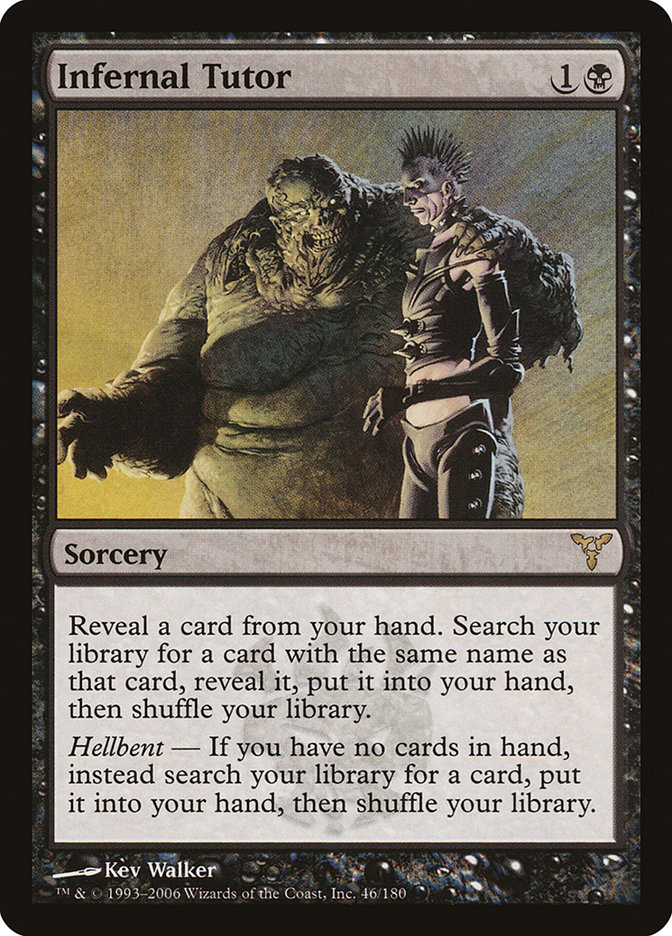
This card does require you to be Hellbent to be Demonic Tutor. This is one of the common things people forget about and punt.
This card can be a Ritual if you have thresholded Cabal Rituals, Lion’s Eye Diamonds, or Rite of Flame #3 or #4 to find. If you have a Dark Ritual, extra copies add Storm at 0 total mana invested and if you have Lotus Petal they generate Storm at -1 mana for +2 Storm.

Burning Wish exiles itself, so if you just have a single Wish as your action card getting a recursion spell (Past in Flames or Ill-Gotten Gains) is not an option. If your only tutor is Burning Wish, you’re usually not playing for a longer game. There are games you use it to find Tendrils after a longer turn involving cantrips and counterspells, but most of the time you are getting Empty the Warrens or Diminishing Returns. Both of these cards are relatively low-mana kills that are specifically keyed to fast wins. Empty the Warrens gets much worse as a game goes longer, and the uncertainty of Diminishing Returns makes it more of a panic switch for games where things aren’t necessarily getting better.
You can burn a lot of sideboard space on a Wishboard. You really don’t need to do that. Storm can actually use sideboard slots on real cards. By my count, the minimum Wish board is six cards:
- Hull Breach, Revoke Existence, Shattering Spree, or a similar answer for Chalice of the Void.
- Deathmark, Pyroclasm, or Virtue’s Ruin for hate bears (likely a lower-cost one if you just have one).
- Ill-Gotten Gains or Past in Flames (I have found IGG more relevant to Wish for).
- Empty the Warrens
- Tendrils of Agony
- Diminishing Returns.
If you really don’t want Diminishing Returns, that’s your decision. I will always have one.
Action:
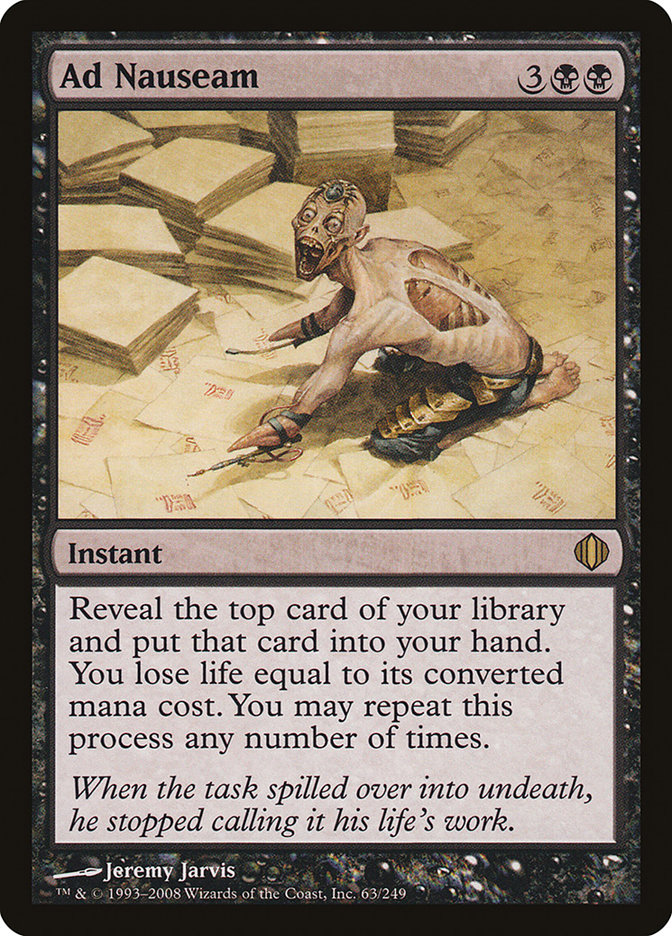
Ad Nauseam is an instant. While there aren’t a lot of Landstill decks any more, a common line was to use an end step Ad Nauseam as a Mana Short, then untap and try for a different kill.
Typical Ad Nauseam kill ranges, with an unused land drop counting as +1 mana floating:
TES, 0 floating: 14-15 life is solid, 12-13 can easily make it.
TES, 1 mana open of any color: 12-13 life is solid.
ANT, 0 floating: 18-20 life is required, no promises.
ANT, 1 floating: 14-15 life is solid.
ANT, 2 floating: 12-13 life is decent odds.
Notice the differential power of this card with and without Chrome Mox and Rite of Flame.
If you are going to have enough mana floating after to cast what you want (RBU in TES, BUU in ANT) consider whether cracking a Lion’s Eye Diamond now is better than having access to hellbent if you hit lands and an Infernal Tutor.
A bunch of extra black mana floating when you Ad Nauseam is not especially helpful. A black and a bunch of blue floating is helpful, as if you get low on life you can them start firing off the cantrips you hit.
Gitaxian Probe for life is less cards seen than just flipping still off Ad Nauseam. It’s only worth it for Storm count or to be absolutely safe, but if you need to be absolutely sure you probably don’t need to flip more cards.
Sometimes you have to go for Ad Nauseam at low life. You can still win, you just aren’t a favorite. Don’t exclude the option because the odds are low.
Ad Nauseam is an answer to Stifle as you will likely find a discard spell and mana to cast it on your way to a win.
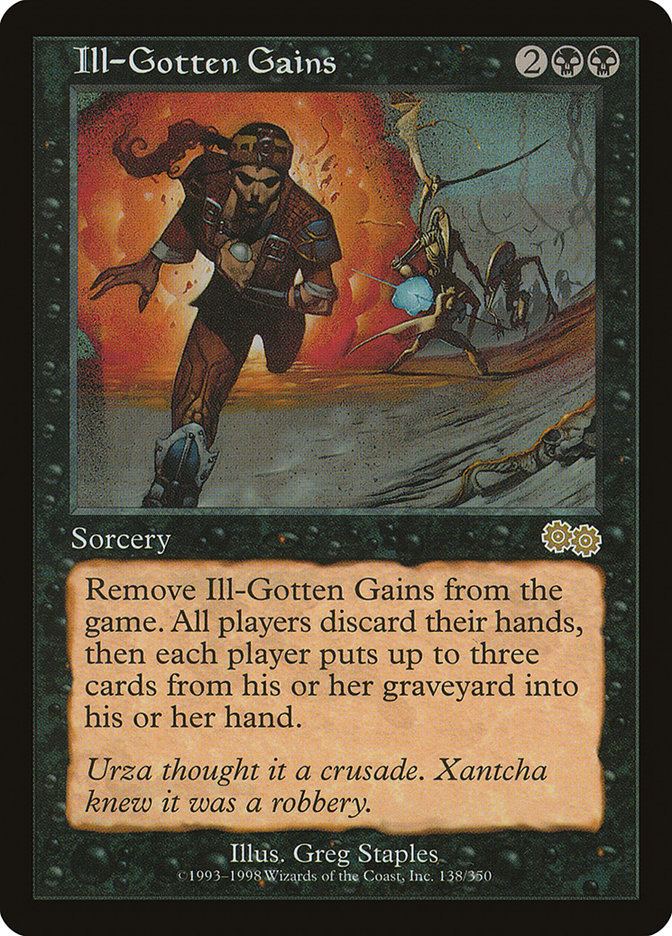
This card does not target. That means if you have multiple Tutor and Lion’s Eye Diamonds in graveyard, it will beat a Deathrite Shaman.
The critical number to kill with this card is usually twelve total. It also effectively adds mana once you have seven without casting it or the tutor (or eight if you are returning a Cabal Ritual). If Ill-Gotten Gains is your sixth spell, you will hit lethal Storm for an opponent at 20.
If your opponent is just returning Dazes or Spell Pierces with Ill-Gotten Gains, you can account for this and go over the top with enough Rituals. The same applies to them returning a Force of Will if you return a Duress. The numbers on the latter are ten floating before you Tutor for Ill-Gotten Gains if you are returning a Cabal Ritual with threshold or Lion’s Eye Diamond with your Duress and Tutor, eleven floating if you are just returning a Dark Ritual.
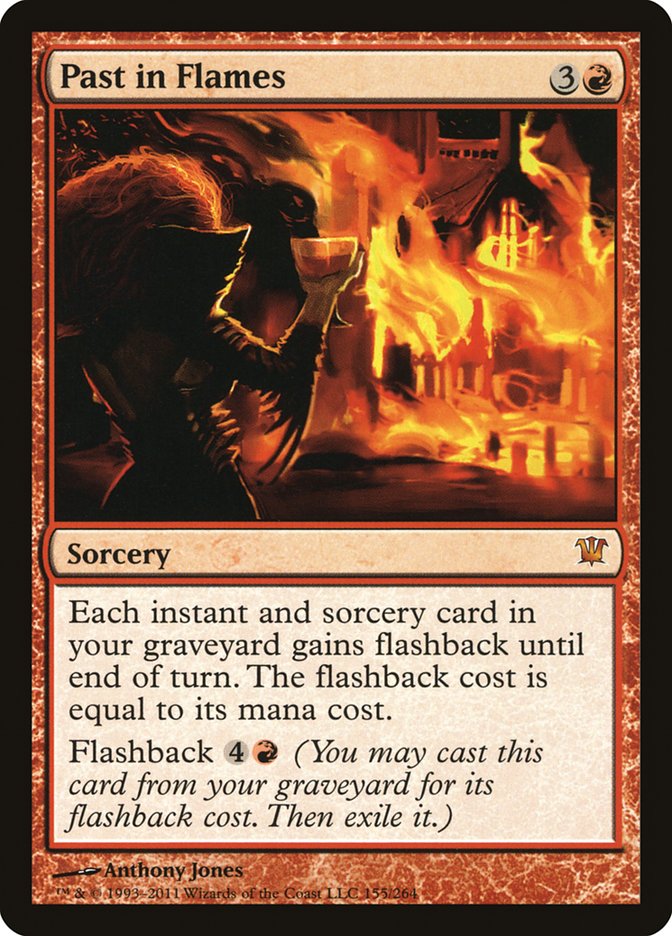
Lion’s Eye Diamond can be used to pay for flashback on a Past in Flames in your hand. As Lion’s Eye Diamond is a mana ability, the Past in Flames ends up in your graveyard with you having priority before your opponent can respond with a Deathrite Shaman activation to exile it.
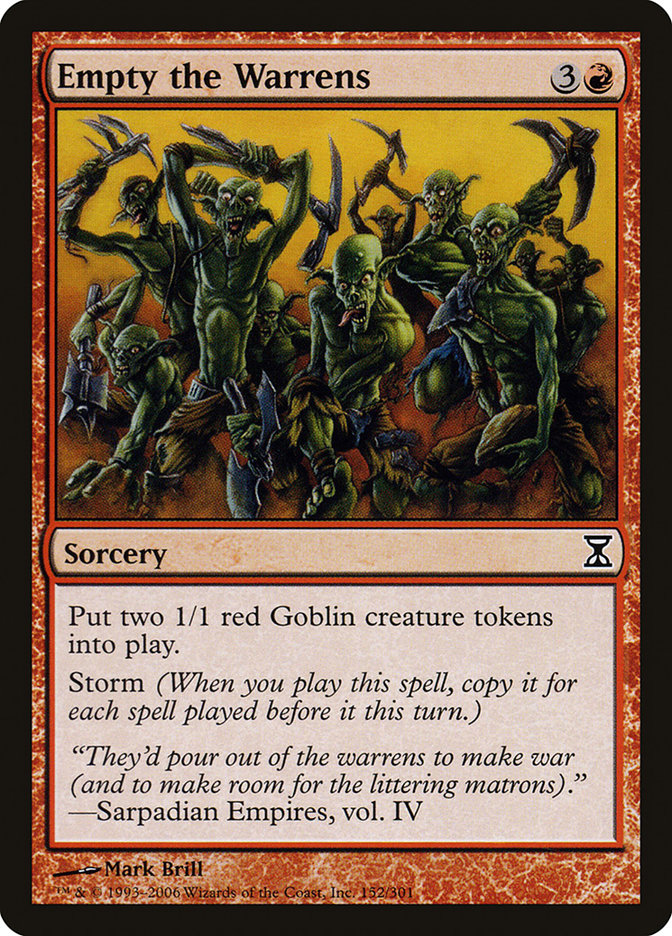
As mentioned in the Burning Wish section, Empty is mostly an early game plan for when you want to just gun it before a blue deck can set up real counters, Hymn to Tourachs, or whatever they are trying to do that isn’t Force of Will.
You can flashback Cabal Therapy off Goblin tokens to hit Maelstrom Pulse, cantrips, or whatever you think might actually stop thirteen 1/1s.
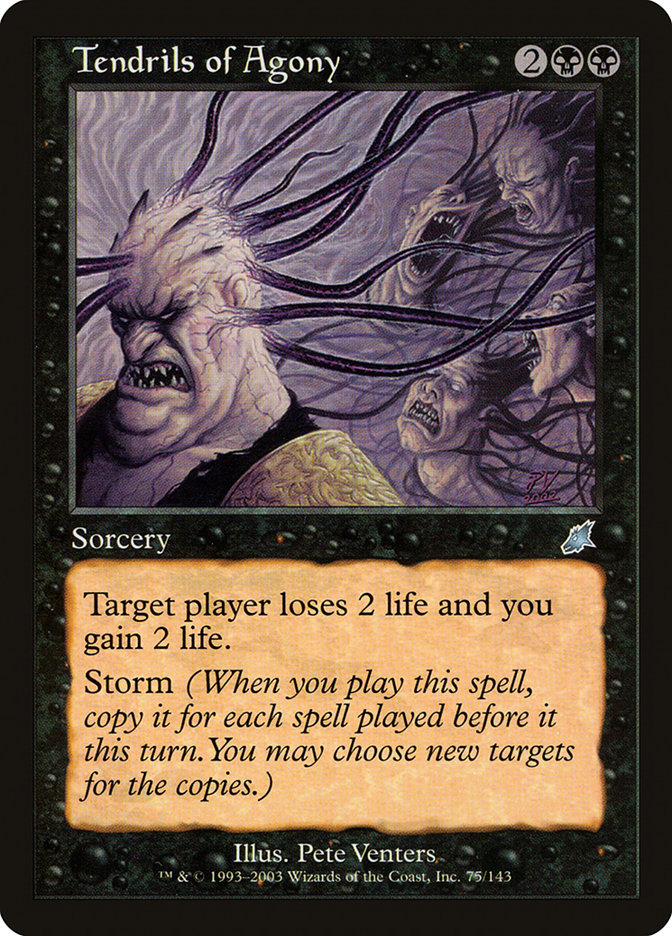
In the games where you play for an in-hand Tendrils, be aware that opponents can counter Tendrils copies instead of other spells if they know what’s actually going on. That last part is a bit of a stretch, but sometimes they do.
Be aware of how their Force of Wills interact with your required Storm counts for Tendrils. Sometimes you can back them into a corner where they have to Force of Will something, go down a Tendrils copy, and die.
Lands:
In ANT, don’t use Polluted Deltas to fetch dual lands if you can use a different fetch.
If you are going to pass the turn with a dual in play at some point, you aren’t really going to play around Wasteland unless you need to get to two mana in a turn. Consider that fetching dual lands could keep you from being cut off a color.
Baiting a Wasteland can be important if you are flooded and want to keep them off a high-cost threat like Jace.
The one thing I’m short on is details of combo mirrors, and a lot of that can be found here: Yet again, Carsten Kotter is there weeks ahead.
I’ve tried to stay away from matchup-specific notes as it’s typically more important to be flexible about what you are playing against. If your opponent plays Knight of the Reliquary off Noble Hierarch, Savannah, and Tropical Island, let’s be honest, you have no idea whether they have Daze, Spell Pierce, or Stifle – but you should know how to beat each one.
Next weekend I’ll be attending Eternal Champs in Philadelphia. This likely means a coinflip deck decision, cookies from Reading Terminal Market, and finally making real informed decisions about what to play at the Grand Prix.
For those of you not attending, that second one should make you the most jealous.
